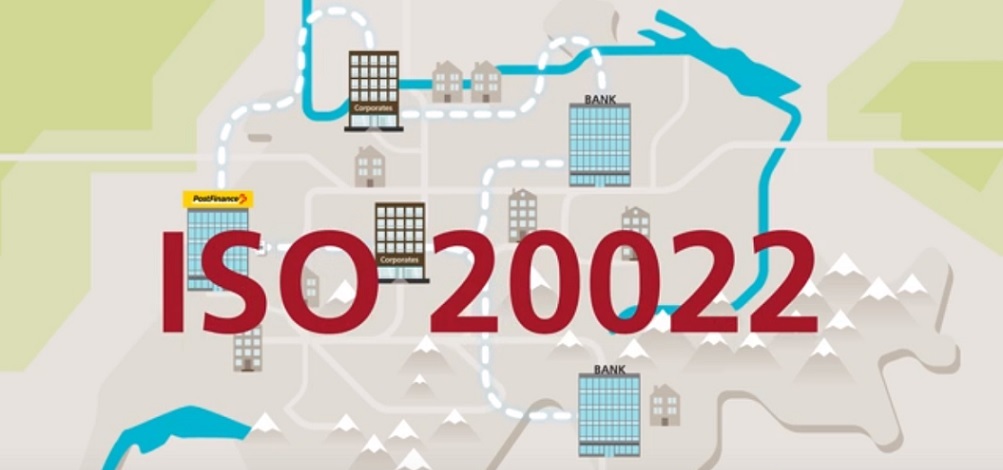
article written by Anders Olofsson, Head of Payment and Open Banking Solutions at Finastra
He is one of the international experts invited by NOCASH to present at the international fintech conference – Banking 4.0
The financial ecosystem as we know it is evolving. The world of payments is entering a new and exciting era that brings promise of modernization and flexibility brought on by the migration to the new ISO 20022 messaging standard. This transition will bring not only heightened opportunities but also challenges for banks, how will you ensure a smooth migration?
First off, it’s important to know the basics. Essentially, payment systems are moving away from the legacy FIN standard toward the more modern ISO 20022 messaging. The scale of this transformation is global, affecting payment structures across the world.
Time is ticking as by 2025 all global markets will have migrated to the ISO standard. This global migration will be kicked off by Europe in November 2021, with the euro LVPS switching from legacy FIN “MT” to ISO 20022’s “MX” standard, for both TARGET2 and EURO1. The US will follow close behind with migration set for 2023 with the rest of the world following suit by 2025.
The switchover from MT to MX is a step in the right direction for everyone in the payments value chain, but that doesn’t mean that it comes without its challenges. One major obstacle is the difference between ISO and FIN messaging. It requires banks to carry out significant alignment work, even implementing temporary alternatives to work with until their migration is completed. It’s a complex process, but ultimately it will bring a world of more flexible and detailed messaging.
The new style of the ISO messaging will mean that, depending on the payment type or system used, different guidelines or restrictions need to be introduced to ensure that the content of a message is correctly processed and understood by the recipient. Alignment work to achieve this is already underway in various international working groups.
So, as TARGET2 and EURO1 prepare for the switchover, what does all this mean for Europe? The switch to the MX standard will allow payments to carry a great deal more structured data, as well as standardizing payments that were previously inconsistent. For European banks, using ISO messaging for local and lower-value, largely automated SEPA payments is common practice, whereas higher-value and cross-border payments have typically been processed through less automated systems. This is set to change with Europe’s LVPS moving to join SEPA through the adoption of ISO 20022 messaging standards.
But what are the benefits for banks? ISO 20022 messaging, as well as providing more detail and flexibility, will also increase efficiency, cost and straight through processing (STP) rates. Furthermore, the increase in information provided can also be used to enable easier real-time tracking of payment messages across multiple banks and payment systems. It will also reduce the risk of errors as users will be able to include additional payment details and references. Moreover, this convergence of messaging standards between euro retail and LVPS will enforce the alignment of payment services at different levels.
The benefits of MX messaging are endless, with the additional data available giving banks the ability to take advantage of higher speed, visibility and STP to their end-customers through the development of better, richer services. Not to mention the increased ease of developing services that switch between different payment channels. With regards to corporate services (across B2C, B2B and C2B) they’ll have the advantage of better reconciliation, improved transparency and in-depth payer-to-payee information. Banks and corporates will also be able to benefit from smoother, more unified KYC processes, covering more regulations and regions.
ISO 20022 provides an opportunity for banks to revolutionize their payments processing as well as their wider service offerings for customers. This will give banks the chance to take a step back and look at their whole payments processing system in order to establish how to make the most of capturing, storing and managing the additional MX information in new ways to create added value for customers.
The global switchover is sooner than you think, with the EU’s migration to ISO in place for 2021, followed up by the US in 2023, the world is scheduled to be ISO by 2025. That’s just six years for both payments processing and reconciliation to be entirely based on ISO messaging. Now, the challenge for banks is to ensure that they are fully prepared for alignment with MX by 2025 or face difficulty in developing competitive and compelling services for customers.
It’s undeniable, the new era of payments is well and truly upon us. ISO 20022 messaging is set to revolutionize payments systems and at Sibos 2019, Finastra is ready to support you on your journey from MT to MX. The time has come to embrace the future of banking.
About the author
Anders is the Payments Leader at Finastra. His professional career includes similar leadership roles at D+H and Fundtech as well as sales and solution roles with IBM and LogicaCMG. He has over 20 years’ international business experience with deep technology, transformation & outsourcing experience, delivering successes for customers across their retail, wholesale, cash management & payment businesses.
Banking 4.0 – „how was the experience for you”
„To be honest I think that Sinaia, your conference, is much better then Davos.”
Many more interesting quotes in the video below: